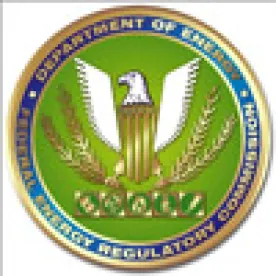On December 8, 2015, the Federal Energy Regulatory Commission (“FERC) Office of Enforcement held a technical conference respecting FERC’s recent Notice of Proposed Rulemaking (“NOPR”) on Connected Entity Data. As discussed in an earlier post, if adopted, the NOPR would dramatically increase the amount of information that entities participating in Regional Transmission Organization (“RTO”) and Independent System Operator (“ISO”) markets would be required to disclose regarding their affiliates, contractual arrangements, and employees. If adopted, the NOPR would require each market participant to report to each RTO and ISO any “Connected Entities,” a term that is defined to include:
-
Any entity that directly or indirectly owns, controls, or holds 10% or more of the ownership instruments of a market participant, that is under common control with the market participant and participates in FERC-jurisdictional markets, or in which the market participant holds an ownership interest;
-
The CEO, CFO, chief compliance officer, and the traders of each market participant;
-
Any entity that is the holder or issuer of a debt interest or a structured transaction that gives it the right to share in the market participant’s profitability above a de minimis amount or that is convertible to a direct or indirect ownership interest of 10% or more in the market participant;
-
Any entity 10% or more of whose ownership interests could, with the conversion of debt or structured products, be owned, directly or indirectly by a market participant; and
-
Entities that have entered into an agreement with the market participant that relates to the management of resources that participate in FERC-jurisdictional markets or otherwise relates to operational or financial control of such resources, such as a tolling agreement, energy management agreement, asset management agreement, fuel management agreement, or the like.
Each market participant would also be required to update this information within 15 days of any material change and certify the accuracy of its Connected Entity data on an annual basis. FERC convened the technical conference in response to a request from a number of industry participants who expressed concern regarding the burden associated with FERC’s proposal and the scope and ambiguity of the definition of Connected Entities.
FERC staff opened the technical conference with a presentation outlining its proposal and the need for such data. FERC staff emphasized that the NOPR is intended to enhance the Office of Enforcement’s ability to screen for potentially manipulative conduct by identifying previously “hidden” relationships that may motivate and influence a market participant’s behavior. FERC staff explained that, without such information, the screens it applies to identify manipulative or anticompetitive behavior is “less reliable at flagging anomalous behavior” and “can flag too little or create false positives that require unnecessary follow up.”
In its presentation, FERC staff also emphasized that market participants’ provision of Connected Entity data would be subject to the general prohibition on false and misleading statements contained in Section 35.41(b) of the Commission’s regulations, which provides that a seller “must provide accurate and factual information and not submit false or misleading information, or omit material information, in any communication with [FERC, market monitors, or an RTO/ISO] unless [it] exercise due diligence to prevent such occurrences.” While FERC has taken enforcement actions against market participants for violation of this prohibition, including the assessment of civil penalties, FERC staff indicated that it would not typically pursue inaccurate or late submissions that are “inadvertent, timely remedied, and cause no harm.”
Following its presentation, FERC staff responded to questions that had been submitted by interested parties prior to the conference. The vast majority of questions focused on the definition of Connected Entity, especially the types of ownership interests and contractual arrangements that would fall within the scope of the definition. The responses of FERC staff, while providing much needed clarity regarding elements of the definition, highlight the broad range of entities and arrangements that market participants now will be required to report to RTO and ISO markets if FERC’s proposal is adopted. Specifically, FERC staff made the following points:
-
Connected Entity encompasses a broad range of ownership interests, regardless of whether the interest confers control. With respect to ownership interests requiring disclosure, FERC staff affirmed that the definition of Connected Entity would include any entity that directly or indirectly holds an ownership interest in a market participant, even if the interest is passive and does not confer control over a market participant. FERC staff emphasized that market participants may have a motive to favor the interests of such Connected Entity, even where the Connected Entity does not have any control over the market participant. FERC staff also clarified that the definition could encompass entities that hold ownership interests in a market participant that do not do any business in FERC-jurisdictional markets or are located outside of the United States.
-
Connected Entity includes employees, contractors, or agent of market participant that exercise decision-making authority over trading activities. FERC staff also provided further clarity regarding the requirement that market participants identify individual traders. In particular, FERC staff clarified that “trader” is defined to include any person who makes decisions or devises the strategies for buying and selling physical or financial products in organized electricity markets. FERC staff added that the definition would not include an employee that plays a purely administrative function and executes trades without having any control or influence over the decision whether to make the trade. FERC staff also explained that the disclosure requirement would extend not only to the market participant’s employees performing such functions, but also to any contractors or agents of the market participant as well.
-
“Management of resources” for purposes of the Connected Entity requirement includes agreements that confer operational control. FERC also narrowed the potential scope of the requirement that market participants identify parties to agreements relating to the “management of resources that participate in FERC-jurisdictional markets.” FERC staff acknowledged that the examples provided in the NOPR, which suggested that agreements relating to solely administrative services such as billing and procurement would need to be disclosed, may have caused unneeded confusion. In this regard, FERC staff stated that the focus of this element of the definition of Connected Entity is on agreements that confer control over trading activities or the unit commitment decisions of the market participant. Thus, fuel arrangements, tool sharing arrangements, physical maintenance arrangements, and power purchase agreements would not typically merit disclosure.
-
Connected Entity includes debts and other transactions that give the entity the right to share in market participant’s profitability or establish an ownership interest in the market participant. Finally, on the issue of debt interests and structured transactions, FERC staff clarified that the focus of this requirement is on transactions that give the entity the right to share in the market participant’s profitability or that are convertible to an ownership interest giving it 10% or more of the ownership interests of the market participants. FERC staff added that this could include, for example, mortgagees who are eligible to acquire an ownership interest in the market participant upon default, tax equity interests, and employee incentive plans that grant stock options to employees.
Given the significant number of questions received by FERC staff, FERC staff has posted a document containing its response to selected questions regarding the scope of the definition of Connected Entity. A copy of FERC staff’s document is available here.
Following FERC staff’s discussion of the questions that had been received, representatives of various market participants and the market monitors for PJM and ISO-NE were given an opportunity to share their views on the proposed requirements. For the most part, the market participants present expressed concern regarding the breadth of the proposed disclosure requirement and emphasized the significant efforts that would be required to collect and report Connected Entity information. They also expressed concern regarding the application of the prohibition on false or misleading information to Connected Entity data, emphasizing that market participants may not always have knowledge of, or control over, transactions that result in a change in the status of Connected Entities.
The ISO-NE and PJM market monitors, in contrast, expressed support for FERC’s proposed requirements, stating that the additional information that would be disclosed as a result of FERC’s proposal would prove useful for monitoring for anticompetitive conduct and applying the market mitigation measures. The PJM market monitor also encouraged FERC to consider tightening some of the thresholds included in the definition of Connected Entity (e.g., the 10% ownership interest threshold) on the basis that market participants could structure their arrangements to avoid triggering a disclosure requirement.
At the conclusion of the workshop, Commissioners LaFleur and Clark, who were in attendance for much of the discussion, encouraged interested parties to submit comments addressing whether FERC had demonstrated a need for collecting this information and providing concrete examples of the burdens that would be associated with the requirements. They also encouraged parties to provide examples of how the definition of Connected Entity could be tailored to minimize the burden on market participants while still accomplishing FERC’s objectives.
The statements of both FERC staff and the commissioners present demonstrated a sensitivity to the potential burdens associated with the rule and a willingness to consider ways that the rule could be tailored to minimize the compliance burden. Ultimately, the fate of the rule may depend on the extent to which market participants provide compelling examples of the deficiencies and burdens of the rule while identifying alternatives that may accomplish FERC’s objectives.
Comments on FERC’s proposal are due January 22, 2016.




 />i
/>i

